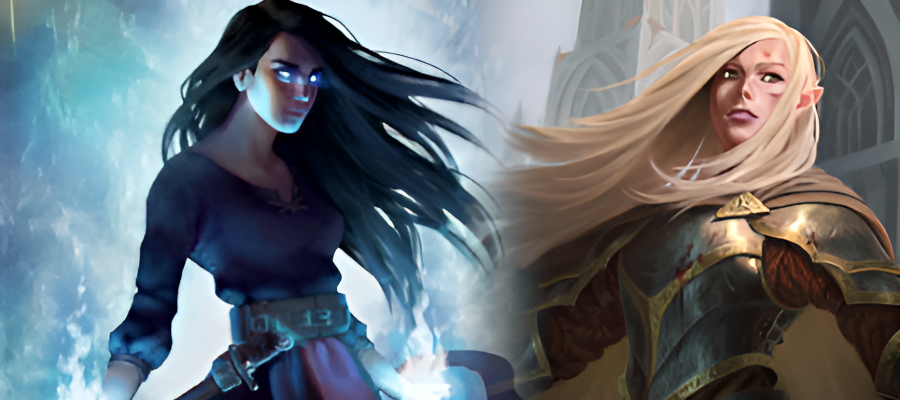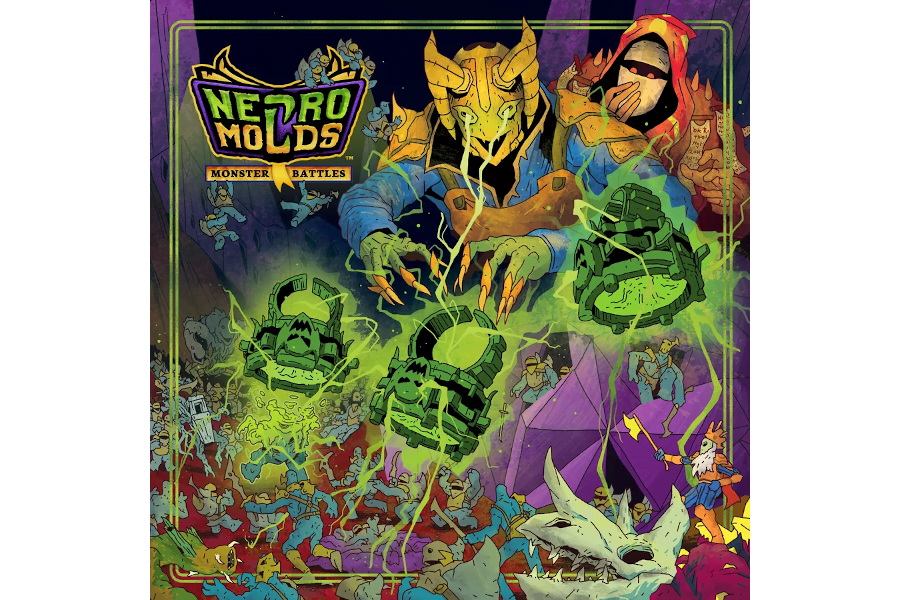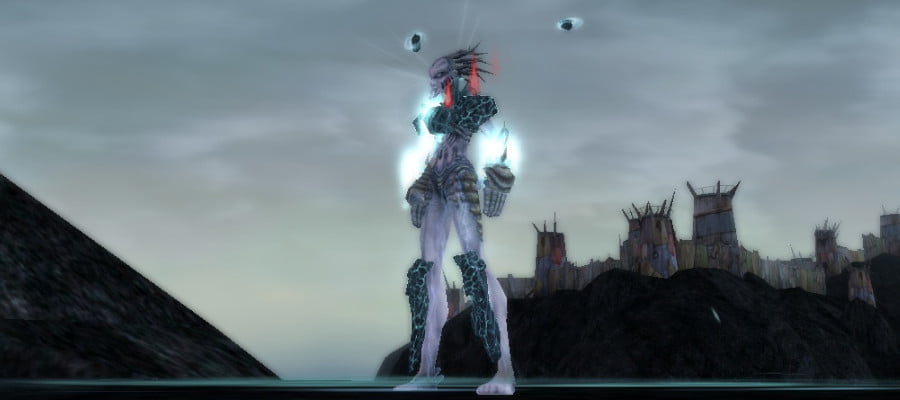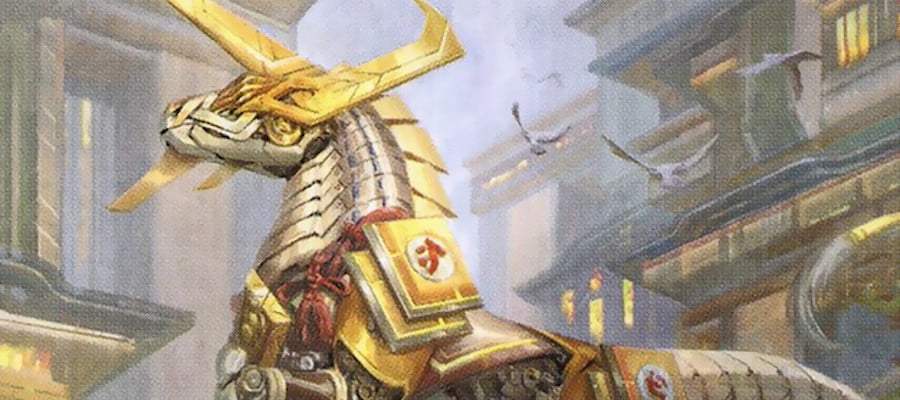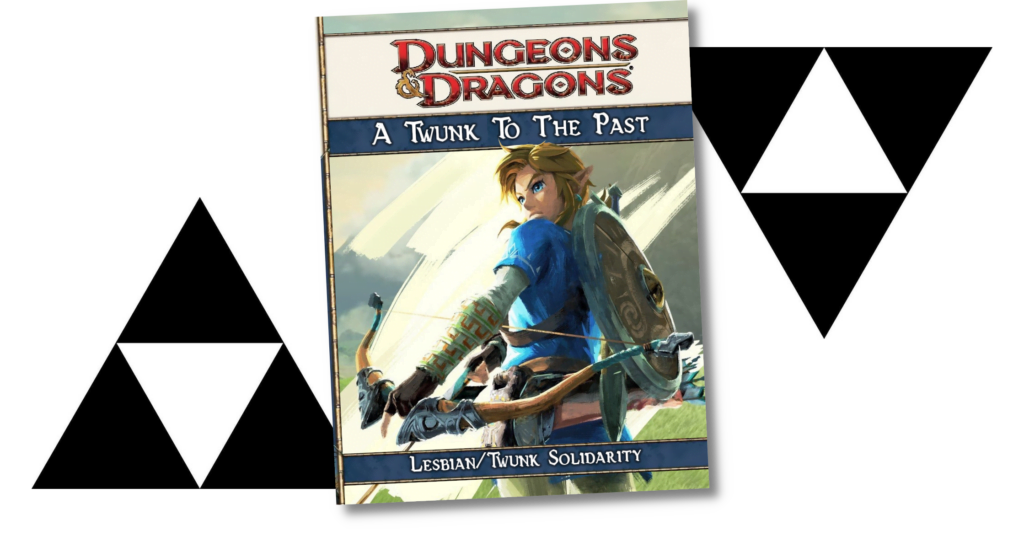Game Pile: Infidel
Boy that’s not a comfortable game title, is it.
Back in 1983, the game studio Infocom was pumping out text adventure games for a bunch of platforms, which included one of the eventual ‘winners’ of the home computer platform, DOS. That meant that even ten years later, you could buy a ‘remaster’ compilation of their games. Designed for a time well before, with assets entirely in text, the Infocom Collection presented 20 games, that once were each a disk, all fitting neatly on a single 3.5 inch floppy disk, with enough extra room for some manuals and ways to circumvent the copy protection, which was, for these games, necessary.
Continue Reading →March Wrapup, 2023!
It’s funny to me that I know more things that reference the phrase march comes in like a lion and leaves like a lamb than I have ever heard the phrase in its own sake. It’s a floating signifier. I think, if you forced me to explain it, it’s a phrase about the sudden shift in the weather at the start of March and then the way it very slowly settles down, which sounds like either a reference to a specific period of time or a reference to a weather pattern that’s very different to me here. Here in Australia, March comes in like Extra February and leaves like Soggy February.
You didn’t come here to listen to me talking about the wet ones, though, you came here to see a monthly roundup of interesting articles on interesting topics that I think you, yes, you, should consider going and reading and now I’m going to present them to you in a sort of ‘list’ form that makes it easier for you to break them down into your areas of interest!
Continue Reading →Bob Ross’ Basilisk
I’m glad I didn’t rush into this conversation.
This is about generative art, using predictive models, which you might hear lumped together as ‘AI art’ these days. I don’t want to use that term for it (though, you know, no promises I don’t mess up and do that), and I don’t want to fall into the trap of that, of treating it like ‘an artificial intelligence.’ It’s not. The term I use for it is Generative Art, which media you can feed into a machine, and then make that machine spit out results based on composing those pieces.
There are two big reasons to use this term instead of ‘AI art.’ The first is that it’s just not AI. AI implies an intelligence, which this absolutely is not and cannot be. There cannot be intention behind the accumulated behaviour of a statistical average. Calling it AI is a cloak thrown over a system – a very clever system! – that’s able to divine fuzzy trends in how people sort and categorise things. The other thing is that calling it generative art connects it to previously generative art – institutions of technological systems designed to make artistic forms in a way that complicates the intention of the artist. This is a tradition that reaches back a long way, and sure, it includes things like these generative art systems, but also random graphical output demos on disks back in the 90s, noise generators in Photoshop, messy blurs, picrews, and even things like tie-die art, and when you can put them in that context, you’re going to be able to extract it from a lot of hype about it, both positively and negatively.
Let’s talk about it, then.
Continue Reading →4e: Dangling Claws
The weapon system in 4e D&D is full of specific keyworded mechanical distinctions for each grouping of weapons in a way that’s designed to add depth to the play experience of any given type of weapon. While in earlier systems, axes and swords and staffs all could be reduced to a mathematical formula representing their damage output over time and therefore, inevitably, the greatsword won, 4e weapons have two different ways they can feel different. The first is just how the weapons work, period, where anyone who picks up a weapon of that type will notice this effect or feats that reference weapons by their category to indicate that the training for that particular weapon enables a different way for that weapon to work. In the first group you have weapon effects like Brutal or Heavy Thrown, and in the second, things like Hammer Rhythm or Axe Expertise. The result is that the weapon system is genuinely interesting to engage with and even though there is a clear hierarchy, the boundaries between the tiers of that hierarchy are not so steep, not so absolute.
There is nonetheless, an area where the weapon system does stagger, though, and that’s natural weapons. The base game features almost nothing with a natural weapon, and the one option you have for it in the starter set is the Gnoll, with a heavily errata’d mess of a feat to get your claws dirty. What’s more, the feat is a bit wonky and weird because, first, you’re spending a whole feat to get the weapon, but you’re also getting a weapon that is only about as good as a short-sword and it interferes with abilities that require you to not be wielding a weapon in your off-hand.
I think that’s dumb; I can treat my fist like a weapon at will, but the game doesn’t then say that I must always have a weapon in my off-hand even when that hand is empty. This indicates to me a simple hole in the way 4e handles natural weapons, and how it makes them available.
So I fixed them.
Continue Reading →Story Pile: My Hero Academia, Season 3
Finally I’m having a good time
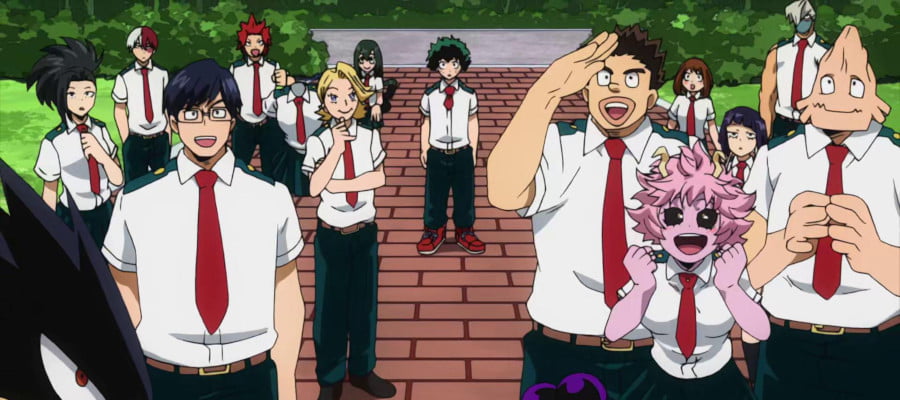
Shirt 23.03 – Sandy Hook Monday
When you engage in a work of satirical criticism, you need to approach it with a clarity of purpose that indicates to your audience the moral framework with which you do it, so that at no point it can be construed as uncritical support for the thing you are satirising, even moreso when contending with media designed to be consumed extremely quickly and uncritically. This is on my mind as I put a lot of work into how to draw a stupid cartoon of Alex Jones as a Garfield character, who absolutely sucks.
I made this design to be a sticker. Alex Jones makes a bunch of stuff in the form of stickers, things you can place around the world to direct attention towards his shitty advertising stream. Alex Jones, let me be clear, is an abusive cult leader who is trying to exploit en masse a community that he also never wants to interact with. Right now, he’s clocking on with a tediousness that speaks of the ‘hilarious’ office garfield strips about hating mondays, and that was the genesis of this design. He sucks, and he’s banal, and the things about him that suck are also pathetic.
This design didn’t feature the background at first. The ‘Hate mon days’ logo used to be ‘HATE ‘MON DAYS,’ as in ‘hate them on days.’ There didn’t used to be as many stackies of paper, nor the big Sandy Hook bill. But I had to add to it to try and make sure it didn’t just look like I was at best neutral about how much this guy sucks.
I’m proud of it, I think it looks unmistakably like Alex Jones if you’re familiar with him, and if you want, you can have it as a sticker, a pin, a shirt, a hat, a coffee mug, or even a magnet!
The Magic Circle (The Magic Is Racism)
One of the few concepts from Games Studies that has escaped into the general atmosphere of people talking about it normally is the idea of the magic circle. The magic circle is an idea mentioned once in the book Homo Ludens by Johan Huizinga, which, much like other off-handed comments made by people focusing elsewhere, wound up becoming something that the games studies world spun off into a great big mess of noise, hi there Wittgenstein thanks for making ‘defining game’ into an academic sporting event.
But the magic circle ostensibly, as developed later by Roger Caillois (somewhat, even if he thought Huizinga was a bit stinky) and kind of elaborated on further by Ian Bogost (kinda?) is the notion that a game exists in a space created apart from the general real world; that the beginning of and experience of playing a game involves engaging in a shared separation of reality that everyone involved recognises and accepts has nothing to do with reality and can be therefore, a place for anything to happen.
Continue Reading →Game Pile: Balikbayan
I tried writing a lot about this game but I kept running into the problem of how much I didn’t know. So I talked about that.
Thumbnail below the fold!
Continue Reading →A Cursed JPG
I am a millenial of a particular age. One of the habits I have is that I am prone to trying to save things. I used to save IRC logs when I was a kid, and it took me a long time to get around to putting that habit behind me when I realised I was saving redundant logs that other computer programs were saving. Discord is a resource I search regularly, checking back on when I brought up other topics with my friends, that kind of thing.
I am circling around the way this story makes me selfconscious.
Continue Reading →Paperclippers
If you wanted to right now you could tune into Youtube or a bunch of podcasts and find any number of people, super soldier programs, space pilots, remote viewers and scientists who will tell you what life is like, in space, working for the space force, you know, the secret space force, and time spent on Mars, dealing with the natives and their relationships to earth life things like – well, you’d call them cryptids, like how they relate to benevolent cuttlefish AI in the political positions of the Sqatch. You know, the kind of thing.
And… they’re fantastic and exciting and they’re sometimes confusing and they’re usually incoherent and they almost always rely on some stuff that sounds like it doesn’t make sense, and the reason it doesn’t make sense is because you’re hearing the most exceptional stories of the most exceptional people filtered through the work of a lot of the rest of us.
And I mean a lot of us.

3e: Arcane vs Divine
What’s the difference between Arcane magic and Divine magic?
Familiar as I am with 3rd edition, I know there’s definitely a structure that says Arcane magic is the slightly more powerful one, and that Divine magic is easier and more convenient to use out of the box, but that’s the perspective from one extremely bleeding edge level of power that I never really got to play with. My experience of wizards and clerics in 3rd edition were always characters who did that and something else, in order to keep their power level meaningfully contained. Basically, I liked a wizard with a sword or a cleric with a pet rather than just taking my Busted Spellcaster Classes straight.
Until 4th edition approached and rebuilt every power source with a specific holistic vision for the shared traits of powers, Arcane magic and Divine magic existed as parts of a continuum that shaped your vision of the world at large. And the machinery of the game was designed to get people involved at one point and you were meant to grow as a player while you did.
What, then, was the difference?
Continue Reading →Story Pile: Ultra
Content Warning: Rachel Maddow.
Oh and all the Nazis.
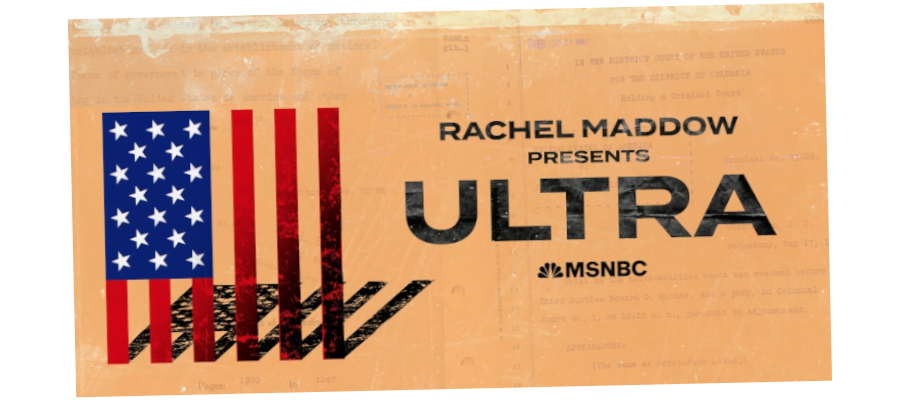
A Game I Don’t Know How To Make
I was asked over on my patreon to consider how to make a game like:
A game that can, at least *sort of*, help people who may not be incredibly familiar with each other grow to know each other/grow closer.
Now, this is the kind of open prompt that can invite an answer that I think may feel a bit nice and homey but also, feels a bit of a bullshit dodge from me, the person providing the answer. Because, just as every game is educational, every game gives you an opportunity to understand someone, every game gives you a chance to grow to know someone else and get closer to them. And that’s true, but it’s meaninglessly true, it’s trivially true. If you asked that question, if you asked for that kind of game, then chances are telling you ‘the answer was inside you all along’ feels like I’m just avoiding the responsibility my implied expertise offers.
Plus, this person gives me money.
Which makes me feel decidedly assholey about bouncing on my responsibilities here.
With that in mind, I dedicated time to work out an answer to this kind of game idea, and I got an answer but it’s an answer my current skillset doesn’t really address. I think, knowing what I do about what webpages can do, that this is probably a game that a very skilled person could make run out of, like, a webpage, but I do not know how to approach it.
Let’s just talk about the game as a design and my mentality behind it.
Continue Reading →Defending The Defended
Discourse.
Ahhhhh!
Okay, cool, now you’ve got that out of your system, we can move on.
Continue Reading →Game Pile: Necromolds
Us Beastfolk
I am of the opinion as a designer that D&D settings are more interesting when you consider the diegetic language of the setting, and that language is best served when you do not pre-emptively position players to be racist. It may sound like a lot is loaded into that, but, as I’ve said before, consider the term ‘halfling.’ In the context of a universe, that term is almost certainly a slur, if it’s not a term chosen by the people themselves, since it positions them entirely in their relationship to the other, larger people saying that term. If the term ‘halfling’ is to not be a slur, it needs to be a term the halflings use, and then the question follows: half of what.
I’ve talked about this at length in the article on the halflings, and now we’re moving on to another term that players are going to need that I want to try and make sure isn’t a term that naturally implies every character speaking naturally is a bit racist. That term is beastfolk.
If you’re not familiar, beastfolk is a term used in a lot of D&D settings for ‘furries and near-furries.’ It’s for your anthropomorphic animals, but also for humans with some animalian traits. Often these traits need to be centered around the head; for example, Raptorans are kind of more like elves with wings, but despite having wings and talons, they’re generally not seen as ‘beastfolk.’ In a lot of ways, it’s about the face.
If beastfolk is a term the default observer imposes on the group, then that brings with it ideas of colonialism, the idea that the group doesn’t have a way to centre their own identity, and they didn’t get to choose their own name. That sucks. But on the other hand, I don’t think it’s a great idea to tell the players ‘okay, you know this term that’s in the game books and is in the fiction and is definitely a simple handle for what you, a human, can definitely use to describe these nonhumans? you need to stop using that and now use a more complex term that’s probably not as good.’
No, the solution, in my mind, is to come up with a story.
The story of why the beastfolk call themselves the beastfolk.

The Tiny God Of Christianity
I spent fifteen years in a fundamentalist Christian space, and another five trying to recover from that, reconciling what I was with what I was being shown was okay. In this time, I fervently, aggressively, desperately tried to believe in it, tried to make it so it worked for me because I was terrified of the alternative that was the reality I was slowly coming to terms with.
It was in this time, I keenly began to feel pinched at the edges by the desperate smallnes of the god of the infinite and untouchable universe.
Continue Reading →What Do I Think of You?
Serious question.
I’ve been writing for you for a few years now. Who do I think about when I’m writing a post? And what does it mean to write ‘for you,’ for that matter? There’s clearly some personality, some identity I can conceive of as belonging to you, and I know there are things I think of when I’m writing an article.
What is there, then? What do I do when I think of you?
Let’s talk about it.
Continue Reading →Story Pile: Arrival
Arrival is a 2016 movie about the individual experience of a very thoughtful linguist lady as humanity contends with the first engagement with an alien first contact, not in the vein of guns and bombs and tanks and planes, the way Will Smith taught us, but instead, the high stakes, deeply intense world of complex linguistic deconstruction without an existing linguistic frame of reference. And it whips, but it’s also like being bathed in wax.
It’s a language nerd movie, but I’d leave the detailed considerations of that to other people, you know, people who are experts in language. I’d recommend checking out Lingthusiasm, which goes in on the movie in depth. I’m going to try and avoid replicating anything they cover here. The only thing I’d point to that stands apart is the way that this movie demonstrates how weak our language is to discuss language we don’t have.
Don’t worry, I’m not going to talk spoilers after the fold. There’s probably some generalities that can give away things ‘about’ the movie, but instead I want to talk about what this movie thinks is reasonable and normal.
Continue Reading →CoX: Riprap
This is an explanatory writeup of one of my Original Characters (OCs). Nothing here is necessarily related to a meaningful fiction you should recognise and is shared because I think my OCs are cool and it’s cool to talk about OCs you make.
“Ey! Ey you! What’s your matter, eh!?”
They say that Sharkhead kids bite first. It’s a rough town with rougher industries, overseen by outsiders from St Martial and Grandville. Fact is, Sharkhead’s people have to grow up quick and grow up mean, scavengers and scroungers, trying to find some way to wind up in one of the least bad lives.
Fallon’s day job was to shift crates. And the most common thing they shifted was coral from many mining operations around Sharkhead. Do it long enough, inhale enough, and you’d wind up…
Changing.
When Fallon found they could shapeshift into a coral-armoured coralax, they did what anyone else in the Etoile would do with deniability: Go smashing their enemies, while keeping it hidden.
Continue Reading →Veganism In Pokemon
There’s so little interesting stuff you can say about food in the Pokemon universe.
Not that you can’t say stuff about it, but rather that talking about food in the Pokemon universe is a well-worn and kinda boring topic. It was so boring, to me, that when I saw the the final Unravelled over on Polygon was about Brian David Gilbert tackling that idea, it wasn’t until uh… twenty minutes ago that I finally watched it. It’s boring. It’s someting a lot of people have looked into, and it’s been written about for twenty-five years. The second game had a plot point about people eating Slowpokes, after all.
The idea that ‘people eat Pokemon’ isn’t really controversial in the game, and it also tends to bring with it a deliberately muted understanding of what it means to eat meat, or what it means to exist in the world of Pokemon in the first place.

Game Pile: Playing Factions in City of Heroes
MTG: The Tools Of 2022
2022 saw six new Magic: The Gathering sets introduced, and in that, we saw almost twenty four new mechanics with new reminder text, introduced to the game. As someone who didn’t buy a single product all year, these sets interest me entirely because of how these tools get added to my personal toolbox of ‘things to play with’ as I play around at making custom Magic: The Gathering cards.
Let’s check at them!
Continue Reading →Towards a Cozier Internet
The number one priority of Google is keeping your attention on Google. This is not a controversial position, it’s not a conspiracy theory. The priority of the systems that relate to that create an intention towards things like a search engine, or gmail or whatever, are all just functions in the name of keeping your attention on Google. They want you looking at them so they can make sure your attention is where they can monetise it, through advertisers.
This command of attention is prime: even just being a trustworthy source of search information is secondary to the command of attention in the name of making money. I’ve talked about the form advertising takes, in that its job is not to sell you products, but to sell advertising to the people who buy advertising, and anything you do is incidental to that goal. This drive towards the retention of attention and serving the needs of advertisers is so all-consuming that Google literally does not care if people paying for their services use them for exploitative harm, like how in 2022, an advertiser made a malware fake version of widespread software package OBS. Google would happily put this above searches for OBS proper, because they paid for it.
Simply put: Google’s not great.
Neither is Twitter, a service I’ve been using pretty much constantly for nine years. In June, I’ll get a notification about my ten years on the site, even though based on the way the API is behaving, the last post I made to it was February 22, and that was something a blog software was handling. It was, for the latter part of its presence in my life, doing a very bad job of what I wanted it to do. What I wanted Twitter to do was give me an audience who I could direct to things I thought were cool; instead, it mostly became about screaming, and demanding why you weren’t also screaming.
Continue Reading →Playing With Your Food
Do you find yourself doing this thing in games where you can end them, where you know the game is done, but you keep doing things that let you keep playing?
I’m not talking about games like Skyrim where there’s a whole instrumentation of the game being built around giving you more varieties of tihngs to discover and where you can break ‘the game’ apart into lots of smaller chunks of ‘game experience.’ In that case you can view the game at large as an archive, where the conclusion, the ‘end of the game’ is a kind of unimpressive tome in the whole arrangement of these things, but where the driving play experience you focus on is instead all the stuff that builds up to that point. Nor do I mean something like Minecraft where the game’s ‘end’ is very superficial and expects you to return to the play experience over and over inventing new reasons to want to keep engaging with it. They’re not unrelated kinds of experiences, but I really am referring to something that I’ve noticed in myself when dealing with a particular kind of digital card game.
It’s Star Realms, but it’s true of its cousin game, Hero Realms as well.
Continue Reading →Story Pile: My Hero Academia, Season 2
You can tell the quality of a shounen series by how quickly it turns to a tournament arc in order to fill out its episodes. Tournament arcs are a break-in-case-of-emergency story beat for any game in the fighting shonen battle franchise, because while on the one hand, they give you structure, motivation, and a clearly defined sense of progression, they are also, ultimately, just a series of disconnected fights where you have to show characters being cool and explaining what they’re doing for mulitple episodes. I understand entirely why an anime might need to do a tournament arc; the manga industry is a machine that eats artists and shits manga, and when you’re doing a shounen battle series, having this kind of chained sequence of fights gives you an opportunity to fill out the audiences’ perspective and demonstrate a bunch of things like you’re filling out a guidebook. They are practical arcs, they are serviceable arcs.
You can also elevate a tournament arc! There are stories that weave (say) intrigue around a tournament arc, or where the rules of the tournament create a different demand on the characters, or if you follow only one character learning about the world through the arc — there’s a lot you can do with them… but they are also predictable and require you to set them up well with an interesting source of tension.
The first half of My Hero Academia season 2 is a single big tournament arc, and it’s shockingly mediocre.

Prototype 23.02 – Bakarina
Okay, okay, I need to do another one of these posts, the ones where I talk about the monthly prototype for February, that was Smooch Month, okay, that means it’s a standard template at this point, complaining about how hard it is to make smoochy games. Oh wait, what do you mean this time I got inspired and had a cool idea and wanted to build on that? Well, snap, what did I make?
Inspired by My Next Life As A Villainess, All Roads Lead To Doom, I devised something that was really nagging at me as a problem. See, smoochy games don’t feel to me like they benefit from being competitive (mostly). I was stuck on the question of, hey, how do I make a romantic narrative game that focuses on a relationship and choices that lead to that, that doesn’t pit players at odds with one another? How then, do I make a cooperative game about smooching?
I did it!
Continue Reading →USP-02: February’s Custom Cards
Few things can create stupid decisions like romance. Across the Palace boats, there are so many conflicting relationships, whether they be romantic or pragmatic or both, and the tempestuous manner in which these relationships are set up, secretly or publically. Of course, there may be some reason why the vampires of these Palaces, eternal and timeless, seem so enraptured by an immediate need to court – but perhaps it’s just the fashion for the time?
Warning: Wizards employees, this post contains unsolicited designs of custom magic cards.
Continue Reading →Game Pile: Klotski
If you’re the right age, you might remember this old Windows 3.1 game, Klotski. Hypothetically, it’s based on an ancient genre of sliding block puzzles that may or may not date back to ‘Ancient China,’ which is typically a sign that the people writing the textbook have given up. I don’t know it by its supposedly more original name and turns out that a lot of the resources referring to it as Huorong Dao are in languages I don’t read.
It’s a block-sliding puzzle game that looks impossible at first, but you get it presented to you as if you can get the big central block out. It’s funny how, as a kid, I genuinely wasn’t sure if it was possible to solve. Think about that, there was a time when I thought it was very reasonable that someone would distribute a software package that literally could not do anything but let you play around and get frustrated with it a lot. I figured, because I couldn’t solve it, that the game was a program made to make people like me feel stupid and waste our time.
Don’t wanna talk to you about the mysterious origin of this game, though, want to talk to you about a table.
Continue Reading →How To Be: Link (in 4e D&D)
In How To Be we’re going to look at a variety of characters from Not D&D and conceptualise how you might go about making a version of that character in the form of D&D that matters on this blog, D&D 4th Edition. Our guidelines are as follows:
- This is going to be a brief rundown of ways to make a character that ‘feels’ like the source character
- This isn’t meant to be comprehensive or authoritative but as a creative exercise
- While not every character can work immediately out of the box, the aim is to make sure they have a character ‘feel’ as soon as possible
- The character has to have the ‘feeling’ of the character by at least midway through Heroic
When building characters in 4th Edition it’s worth remembering that there are a lot of different ways to do the same basic thing. This isn’t going to be comprehensive, or even particularly fleshed out, and instead give you some places to start when you want to make something.
Another thing to remember is that 4e characters tend to be more about collected interactions of groups of things – it’s not that you get a build with specific rules about what you have to take, and when, and why, like you’re lockpicking your way through a design in the hopes of getting an overlap eventually. Character building is about packages, not programs, and we’ll talk about some packages and reference them going forwards.
With Frame Fatales running, I wanted to talk about a character who has a strong presence in speedrunning, and a character that owns a special place in the heart of the community, and a character who helps people feel connected to something.
I figured what better to do, than look at a Link.
Continue Reading →The Fastest Woman In History
Who is it?
I thought this was a pretty simple question. It feels like the kind of thing that if you punch it into a google search, you’d get a card which mentions this person moved at this speed at this time and they had these genders and you’d have to dig to page 2 to get a good result that wasn’t just mimicking that.
Man, search engines have gotten bad.
Anyway, no, I didn’t get a good answer punching it in, but I did wind up finding a bunch of interesting questions, thinking about it!
Continue Reading →





